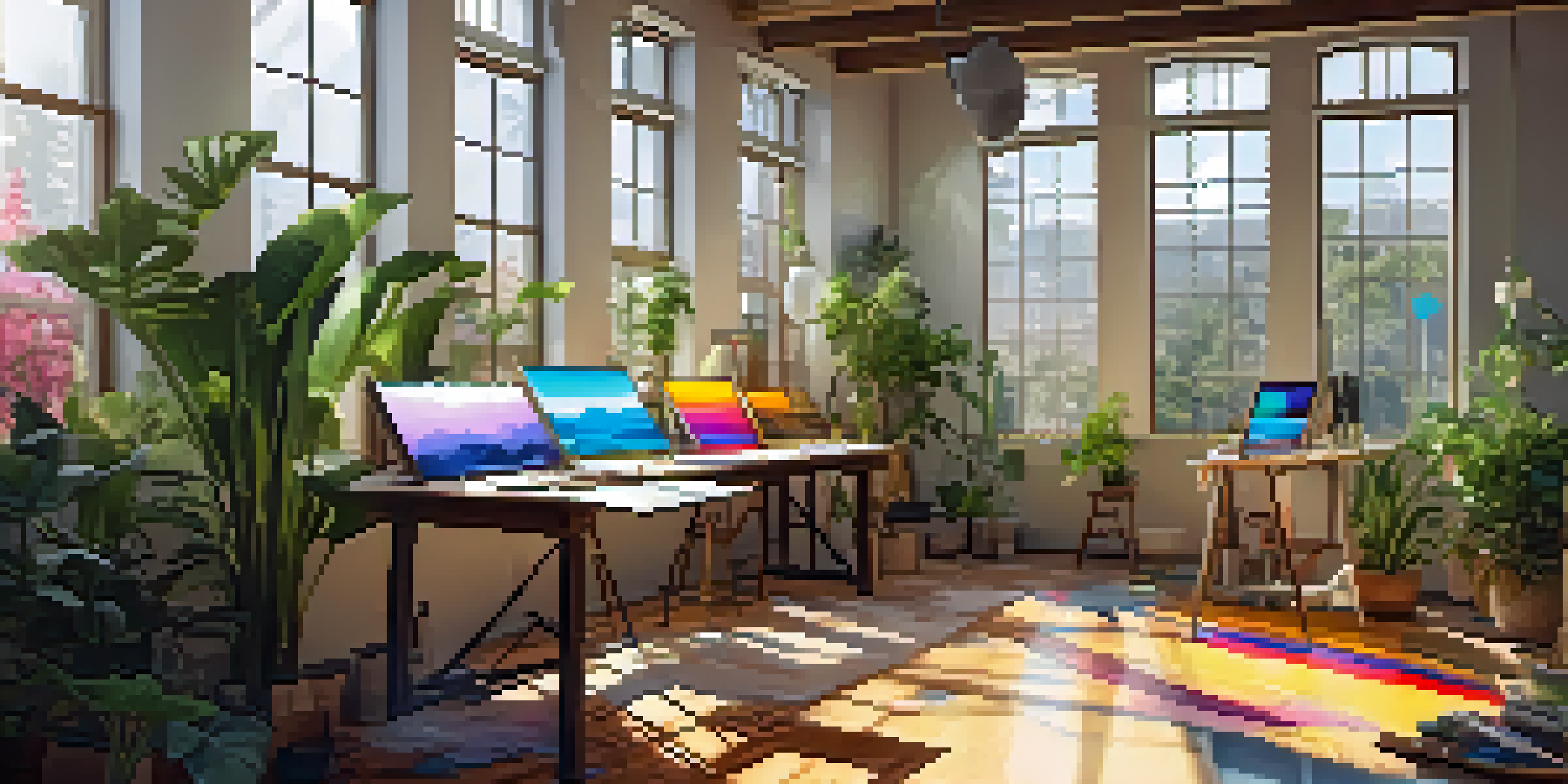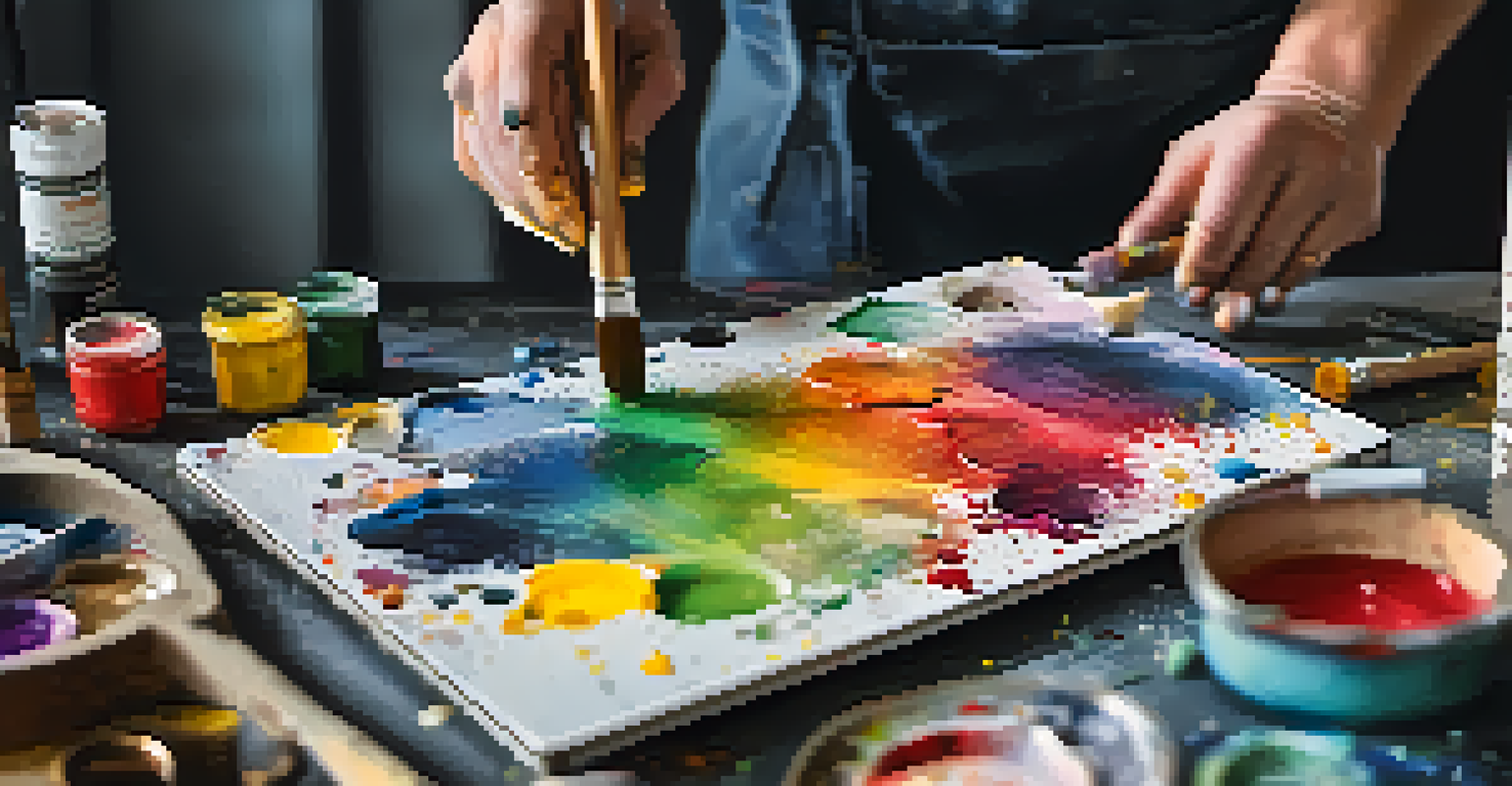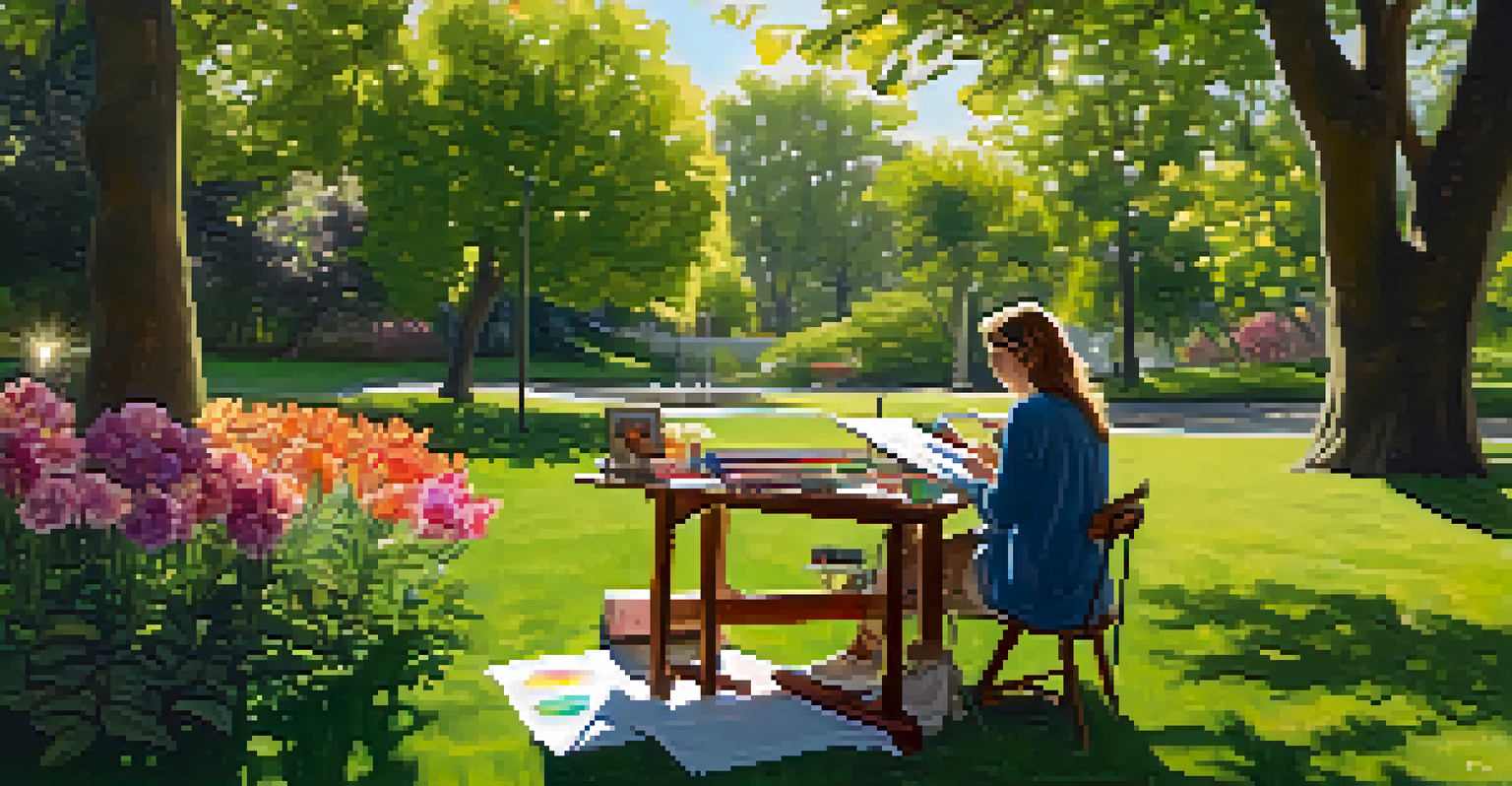The Role of Social Media in Shaping Modern Painting Trends

The Evolution of Art in the Digital Age
With the rise of the internet, art has transformed dramatically, allowing painters to share their work like never before. Today, artists can reach a global audience with just a few clicks, expanding their influence beyond traditional gallery settings. This digital evolution has not only made art more accessible but has also fostered new styles and techniques that reflect the fast-paced world we live in.
Art is not what you see, but what you make others see.
As a result, painters are now inspired by a diverse range of cultures and ideas, often blending elements from different traditions. This melting pot of creativity can be seen in various modern painting trends that resonate with contemporary issues and aesthetics. The ability to connect with other artists and audiences online encourages experimentation, pushing the boundaries of what painting can be.
Social media platforms serve as a gallery where artists showcase their work, receive immediate feedback, and even collaborate with others. This interconnectedness nurtures a vibrant community that thrives on innovation and shared inspiration, ultimately shaping the trends that define modern painting.
Instagram: The New Art Gallery
Instagram has emerged as a powerful platform for artists, often dubbed the 'new art gallery.' With its visual-first approach, it allows painters to present their work in a visually appealing way, attracting followers and potential buyers. The platform's algorithm favors engaging content, encouraging artists to share their creative processes and finished pieces, thus gaining more visibility.

Many modern artists have built substantial followings on Instagram, leading to opportunities for exhibitions, commissions, and collaborations. This shift in how art is consumed means that popularity can be achieved without the traditional gatekeepers of the art world. As a result, trends often emerge organically, influenced by what resonates with the audience.
Social Media Transforms Art Sharing
Platforms like Instagram and TikTok allow artists to showcase their work and connect with a global audience, reshaping how art is consumed and appreciated.
Furthermore, the hashtag system enables artists to categorize their work, making it easier for users to discover new styles and movements. This has led to the rise of niche communities that celebrate specific painting techniques or themes, fostering a sense of belonging among artists and art lovers alike.
TikTok: Short Videos and Art Trends
TikTok has taken the social media world by storm, and it’s also making waves in the art community. With its short-form video format, artists can showcase their painting processes, share tips, and even participate in challenges. This has created a unique culture around art that emphasizes speed, creativity, and relatability, appealing to a younger audience.
The best artists know that they are not the only ones who shape art; they are part of a larger conversation.
Through engaging and often humorous content, artists can demonstrate their techniques in mere seconds, demystifying the painting process for viewers. This accessibility inspires potential painters to pick up a brush and experiment, contributing to the growth of new painting trends. Trends can spread like wildfire, with viral challenges pushing artists to create specific styles or themes.
Moreover, TikTok's algorithm promotes content that garners engagement, leading to increased visibility for artists who tap into trending sounds or themes. This cycle of creation and consumption not only shapes individual artistic journeys but also influences broader trends within the painting community.
The Influence of Online Art Communities
Online art communities have become vital in shaping modern painting trends, providing a platform for artists to connect and share their work. Websites like DeviantArt, Behance, and ArtStation host vast portfolios, allowing artists to showcase their styles while receiving constructive feedback. This peer interaction fosters growth and encourages artists to explore new techniques and ideas.
These communities also serve as incubators for trends, as artists often collaborate or draw inspiration from one another. For instance, a particular style may gain traction within a community, leading to its emergence as a wider trend in the art world. This collaborative spirit not only enhances creativity but also builds camaraderie among artists, further enriching the painting landscape.
Emerging Art Trends from Online Communities
Online art communities foster collaboration and experimentation, leading to the emergence of new styles and movements in the painting landscape.
As artists share their work on these platforms, they also contribute to discussions around art movements, social issues, and cultural commentary. This dialogue helps shape the direction of modern painting, ensuring it remains relevant and reflective of contemporary society.
Challenges of Social Media for Artists
While social media offers numerous opportunities for artists, it also presents challenges. The pressure to produce content regularly can lead to burnout and compromise artistic integrity. Many artists find themselves prioritizing what will garner likes and shares over creating work that is personally meaningful.
Additionally, the constant comparison to other artists on social media can be daunting. Emerging artists may feel discouraged when their work doesn't receive the same level of attention as established creators. This can stifle creativity and lead to a cycle of self-criticism that affects their artistic expression.
Moreover, the risk of copyright infringement is heightened in the digital age, with artists sometimes facing challenges in protecting their work. Navigating these challenges requires a balance between leveraging social media for exposure and maintaining authenticity in their craft.
Crowdfunding and Art Sales through Social Media
Social media has revolutionized how artists fund their projects and sell their work. Platforms like Kickstarter, Patreon, and even Instagram allow artists to connect directly with their audience, providing a way to support their creative endeavors. This democratization of funding empowers artists to pursue personal projects without relying solely on traditional galleries or patrons.
Crowdfunding campaigns often showcase a blend of social media savvy and artistic talent, as artists must effectively communicate their vision to potential backers. This not only helps them raise funds but also builds a community of supporters who are invested in their success. The direct relationship with fans can lead to long-term patronage and collaboration opportunities.
Challenges Artists Face Online
Despite the opportunities social media presents, artists often struggle with burnout, comparison, and copyright issues that can hinder their creative expression.
Additionally, social media facilitates the sale of artwork directly to consumers, bypassing traditional galleries. Artists can showcase their work on platforms like Instagram, creating a seamless shopping experience for buyers. This shift has opened up new revenue streams for artists, allowing them to thrive in a competitive landscape.
The Future of Painting in the Age of Social Media
Looking ahead, the role of social media in shaping modern painting trends is likely to continue evolving. As technology advances, we may see even more innovative ways for artists to connect and share their work. For instance, the rise of augmented reality (AR) could enable immersive experiences that blend physical and digital art in exciting new ways.
Furthermore, social media will likely remain a critical tool for artists to engage with their audience and cultivate their unique voices. This ongoing dialogue between creators and consumers will undoubtedly influence the direction of modern painting, ensuring it remains vibrant and relevant. Artists will continue to use these platforms to push boundaries and explore new dimensions of their craft.

Ultimately, the future of painting will be shaped by the interplay between technology, societal issues, and the creative spirit of artists. As social media continues to facilitate global conversations about art, we can expect a rich tapestry of styles and trends that reflect our ever-changing world.